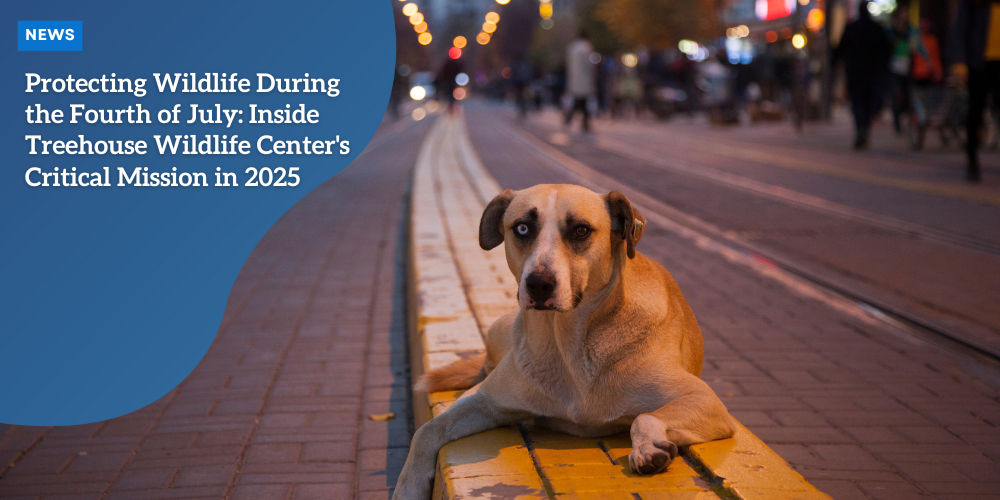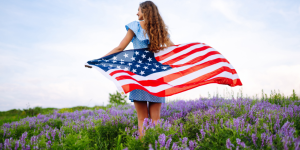Protecting Wildlife During the Fourth of July: Inside Treehouse Wildlife Center’s Critical Mission in 2025

Anúncios
Introduction: When Celebrations Become a Threat to Wildlife
Every year, the United States celebrates Independence Day with dazzling fireworks and enthusiastic gatherings.
While millions enjoy the spectacle, the consequences for animals—especially wildlife—are often overlooked.
As families prepare to soothe their pets with blankets, calming music, and treats, the dangers faced by animals beyond domestic settings go largely unnoticed.
In the heart of Illinois, the Treehouse Wildlife Center in Dow stands as a critical line of defense for local wildlife.
Anúncios
The center braces itself every July for an increase in injured, displaced, or orphaned animals due to the explosive celebrations that define the holiday.
This article explores how the center operates, the scope of its response to Fourth of July impacts, and how individuals can contribute to mitigating the harm caused to native species during this high-risk season.
1. The Hidden Dangers of Fireworks to Wildlife
While fireworks symbolize joy and freedom for humans, they often represent chaos, panic, and survival threats to animals.
The explosive sounds and flashing lights can cause various forms of distress, and in many cases, serious physical harm.
The wildlife most affected includes:
Anúncios
-
Fawns, which may become separated from their mothers in panic and end up abandoned.
-
Baby birds, which can be startled into jumping from their nests prematurely.
-
Squirrels and raccoons, which often flee their dens and suffer injuries during escape.
-
Frogs and other amphibians, which may experience food shortages due to the sudden absence of insects frightened by the noise.

2. About Treehouse Wildlife Center: A Safe Haven in Southern Illinois
Situated at 23956 Green Acres Rd. in Dow, Illinois, the Treehouse Wildlife Center has operated as a nonprofit 501(c)(3) organization since 1979.
It covers a broad region from Springfield to the Metro East, serving as one of Southern Illinois’ primary wildlife rehabilitation and education facilities.
The center functions on an expansive 8.5-acre site, featuring:
-
A dedicated rehabilitation clinic;
-
Numerous animal enclosures for display and recovery;
-
An education center used for outreach to local schools and communities.
While Treehouse assists a wide variety of native species—from owls to opossums—it is legally restricted from rehabbing certain animals, such as adult deer.
Currently, the facility houses nearly 60 permanent non-releasable animals, used for educational purposes. Notable residents include:
-
Nugget, an orphaned flying squirrel who helps educate children about nocturnal animals;
-
Ingram, a crow known for mimicking human speech and engaging visitors.
3. The Surge Season: Why July Is the Most Demanding Month
From late June through mid-July, Treehouse Wildlife Center experiences its most intense and resource-draining period of the year.
Beatty, who began volunteering at the center in 2020 and now manages daily operations, confirms that the weeks around Independence Day consistently bring the highest influx of wildlife patients.
On average, the center expects a 20% spike in animal admissions during the first two weeks of July.
The reasons are numerous:
-
Fireworks scare off nesting birds and mammals.
-
Young animals become separated from parents.
-
Injuries from panicked flight, entanglement, or collision are frequent.
With only two full-time rehabilitators, a few interns, and seasonal volunteers, this spike requires careful logistical planning and a significant increase in supplies.
Among the essentials that quickly run out during this period are:
-
Fresh fruits and meats for feeding omnivorous and carnivorous species;
-
Medical supplies, such as gauze, bandages, and antiseptics;
-
Cleaning materials, especially laundry detergent and disinfectants, used to maintain sanitary enclosures.
4. Shelby Beatty: A Multi-Role Wildlife Advocate
Shelby Beatty’s journey at Treehouse exemplifies commitment to wildlife care. After volunteering in 2020, she gained experience at the St. Louis Zoo and the Endangered Wolf Center, eventually returning to Treehouse as both clinic supervisor and office manager.
Her current responsibilities include:
-
Overseeing animal intake and treatment;
-
Coordinating educational programs;
-
Managing administrative and fundraising tasks;
-
Communicating with donors and the public.
5. Funding and Donations: Sustaining a Non-Government Operation
Despite the importance of their work, Treehouse Wildlife Center receives no government funding.
All operational costs must be covered by:
-
Individual and corporate donations;
-
Fundraising events, such as the annual Owl Fest and Spring Baby Shower Drive;
-
Animal sponsorship programs, allowing people to support specific residents.
Supporters are encouraged to:
-
Donate money via the center’s website;
-
Purchase urgently needed items from their Amazon Wish List or Chewy Registry;
-
Sponsor the feeding of an animal (for instance, feeding one Great Horned Owl costs $60 per month).
6. Medical Partnerships and Volunteer Opportunities
Treehouse also works closely with Hawthorne Animal Hospital, which provides specialized medical procedures that go beyond the capabilities of the on-site team.
These include:
-
Surgeries for fractures;
-
X-rays and diagnostics;
-
Emergency fluid therapy.
However, human hands remain essential. The center frequently recruits:
-
On-site volunteers to assist with feeding, cleaning, and animal handling;
-
Transport volunteers, who collect injured wildlife from roadsides or residential areas;
-
Seasonal interns, often biology or veterinary students seeking field experience.
For those interested in volunteering or reporting wildlife in distress, Treehouse maintains a “Find an Animal?” page, offering step-by-step guidance on what to do.
7. The Larger Conversation: Fireworks, Policy, and Alternatives
The use of fireworks near wooded or suburban areas poses an ongoing challenge for conservation groups. Several U.S. municipalities have begun to consider or implement noise-reduction fireworks or light-only shows as alternatives.
The reasons are clear:
-
Animals lack the context to understand the source of the explosions.
-
The stress caused by fireworks can lead to cardiac events, maternal abandonment, and permanent injury.
-
Wildlife disoriented by fireworks may wander into urban areas, increasing the risk of vehicle strikes or predator encounters.
Animal experts advocate for better education on the subject and local ordinances restricting firework use near wildlife habitats.
| 🚨 Situation | ❌ Common Mistake | ✅ Recommended Action |
|---|---|---|
| 🍼 Found a Baby Animal | Immediately assuming it is abandoned and taking it home | Remember many are being watched by their mother—observe before acting |
| 🍽 Feeding the Animal | Offering food or water without guidance | Do not feed unless instructed by a wildlife professional |
| 👣 Getting Too Close | Approaching or handling the animal directly | Keep a safe distance to avoid additional stress or injury |
| 📞 Need Help | Searching online randomly or calling general services | Contact Treehouse Wildlife Center by phone or website |
| 🔍 Unsure of the Species | Guessing the animal’s needs or species | Use the “Find an Animal?” section on their website for guidance |
Conclusion: Honoring Freedom While Protecting the Voiceless
As the country celebrates its 249th year of independence in 2025, it is vital to extend that spirit of freedom to all inhabitants of our ecosystems.
The Treehouse Wildlife Center in Illinois is a powerful example of how communities can take active steps to protect their environment, even during holidays built on tradition and noise.
With increased awareness, responsible celebration, and community support, the damage caused to wildlife during July 4th can be dramatically reduced.
Whether through donations, volunteering, or simply choosing silent fireworks, every action taken with wildlife in mind makes a lasting impact.






